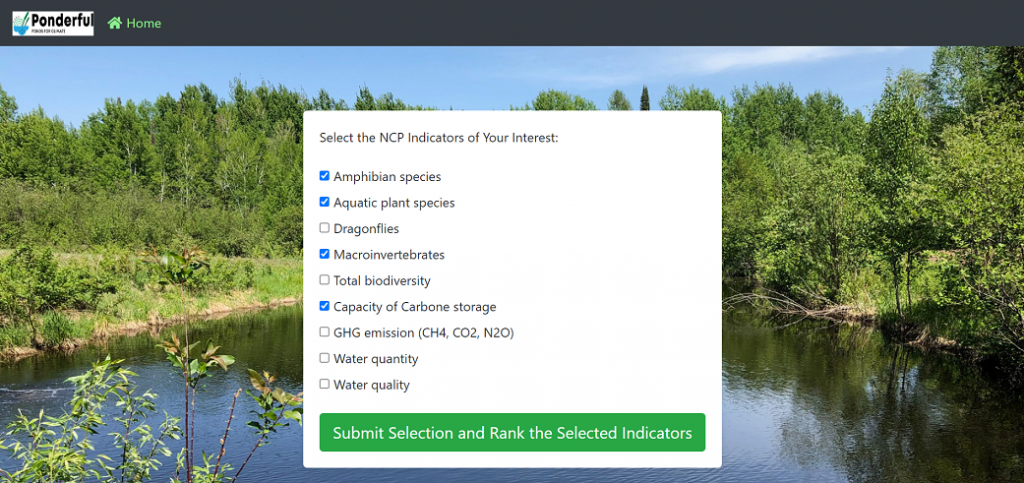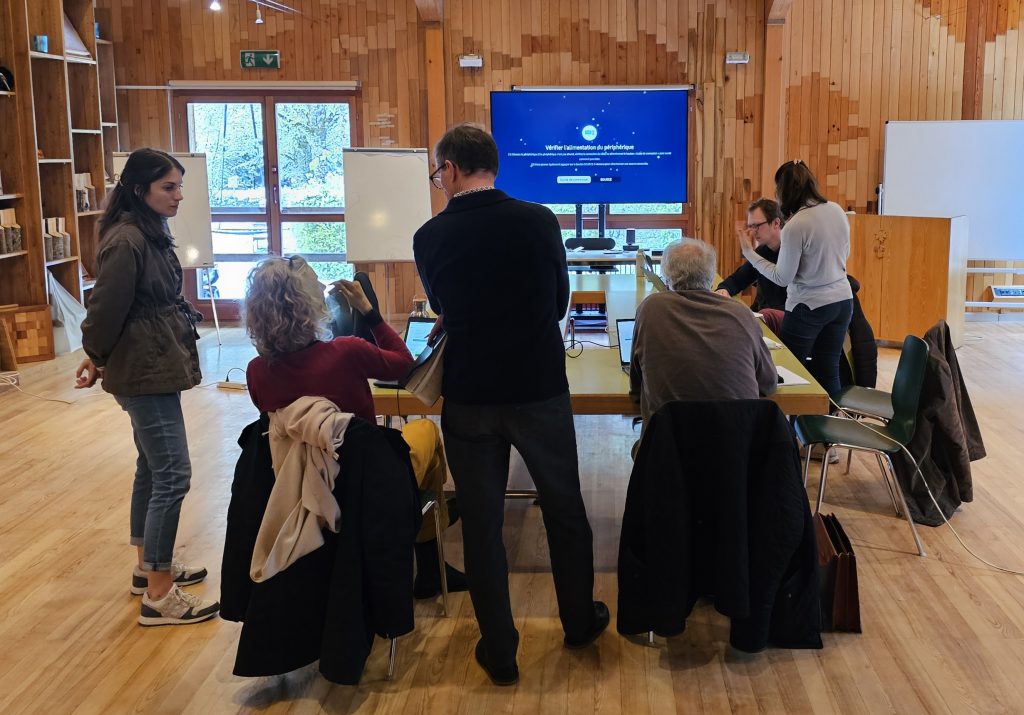As we prepare to launch the PONDERFUL decision support tool, Dr Maryam Lotfian and Professor Dr Florent Joerin (both of the University of Applied Sciences and Arts Western Switzerland, Yverdon-les-Bains, Switzerland) explain how the initiative could change the way we manage, restore and create ponds and pondscapes as nature-based solutions.
What will people use the decision support tool for and what will it do?
The decision support tool is a web-based system that will enable people to compare different potential nature-based solution (NBS) implementations linked to pond or pondscapes. It predict various Nature’s Contributions to People (NCP) provided by the implemented NBS, under different land use and climate change scenarios.
That means, for example, users can compare the creation of 20 new ponds versus the creation of 50 ponds, based on their impact on amphibian populations and carbon flux, under a climate change scenario driven by fossil fuel development.
The tool provides a ‘satisfaction score’ illustrating how well a particular NBS implementation aligns with the decision maker’s management objectives. Based on this overall score, as well as detailed scores per NCP indicator, users can compare the likely results of different actions. People can then use this comparison, along with their own criteria such as cost and completion time, to make a decision on how to approach their pond or pondscape project.
Additionally, the tool is an awareness tool, showing users the impact of NBS implementations on various NCP indicators, such as carbon balance, water storage and biodiversity. We hope the decision support tool will also help raise awareness about the impact of ponds on our environment and ecosystem.
Who is the decision support tool aimed at?
Understanding who the user is has been vital in developing the structure of the tool. We have designed the decision support tool to be used jointly by an expert and a decision-maker.
The expert must be familiar with the land on which pond or pondscape management, restoration or creation is planned. This is because some questions require expertise about the pondscape under consideration, such as expectations of qualitative increase in species richness or the approximative amount of expected carbon balance under an NBS implementation. The decision-maker’s role will be to formulate political expectations regarding the criteria and objectives they wish to achieve through the development of pondscapes.
Decision-makers can also use the tool independently, provided they have a certain level of knowledge about the location and can input variables such as selecting and ranking NCP indicators and setting management objectives for the selected NCP.

How did you research the decision support tool to find out what people need?
We discussed the decision tool during the stakeholder workshops held in autumn/winter 2023-24 in eight different countries where PONDERFUL has implemented DEMO-sites. Additionally, we have collaborated with a pilot test in Switzerland (pondscape from the Jorat Nature Park), where we held three workshops with local decision-makers.
These discussions gave us invaluable insights from some of the people who will be using the decision support tool, helping us adapt it to ensure it is accessible and easy to use.
What difference could the decision tool make to ponds as a nature-based solution for climate change adaptation?
The decision tool not only guides decision-makers in choosing their pond management actions but also serves as a tool to raise public awareness about the role of ponds as Nature-Based Solutions (NBS). It illustrates the impacts of different pond actions on biodiversity under various climate change and land use scenarios. We believe that using the tool can convince decision-makers to take action.

What are your hopes for the decision tool and how it will be used?
We hope that the decision tool will raise awareness among decision-makers and stakeholders about the important role of ponds as NBS. Once they are convinced to take action, we hope the tool can guide them in making decisions more easily and simplify the comparison of various NBS implementations. Additionally, we hope the tool will be used for educational purposes to illustrate the potential impact of different actions and enhance people’s understanding of the role of ponds.
Depending on the final outcomes of the modelling results from PONDERFUL, we also hope the tool can be easily used in areas beyond the project’s investigated pondscapes, and in other countries.
What were the biggest challenges you faced when developing the decision support tool?
This is the first tool of its kind for ponds and pondscapes so it’s not surprising that we have had to overcome some challenges along the way.
The main challenge was that the MCDA (Multi-Criteria Decision Analysis) approach requires certain parameters as input from the user. And these can be complicated or difficult to understand. Therefore, the challenge was to adapt the questions to be easy to understand while still obtaining the necessary input values for running the MCDA.
Additionally, decision-makers need very precise data relevant to their specific context, but the tool operates on a national or international scale, making it challenging to achieve this level of precision. Furthermore, decision-making processes vary greatly from one country to another, and even from one region to another within the same country. Therefore, we have chosen to focus the tool on strategic decisions that are best suited to the level of precision of the available data. Decision-makers can then adjust these strategies using local and contextual data.
Finally, another challenge is the dependency of the decision tool on the PONDERFUL integrated models, which predict the impact of ponds on NCP indicators. Currently, this integration is done manually, but we are now working on optimising this process to establish an automated connection between the decision tool and the models.
What has been the most interesting and enjoyable aspect of developing the decision support tool?
The most interesting part of the process was the exchanges we had with stakeholders during the workshops organised for the pilot study. These discussions were not only engaging but also helpful in improving the tool step-by-step and inspiring ideas on how the tool can be adapted for future uses.

Additionally, brainstorming between the two of us on how to adapt the tool and its connection with the PONDERFUL modelling results has been enjoyable. Even the coding itself was sometimes fun!
The PONDERFUL decision support tool will be available on the PONDERFUL website from November 2024.

